This post may contain affiliate links, meaning, at no additional cost to you, I will earn a commission if you click through and make a qualifying purchase.
Do you have an area in your yard that you’d like to use as a flower bed, but you don’t know how to get started? Or maybe you have an existing flower bed that’s just become overgrown with weeds and you’d like a fresh start with it?
Well, it can be done, and–
It’s actually easier than you think!
In this post, I’ve got easy and cheap directions for you to get it done in 5 steps, in one afternoon! And it will keep the weeds at bay all season long without any pesticides or chemicals.
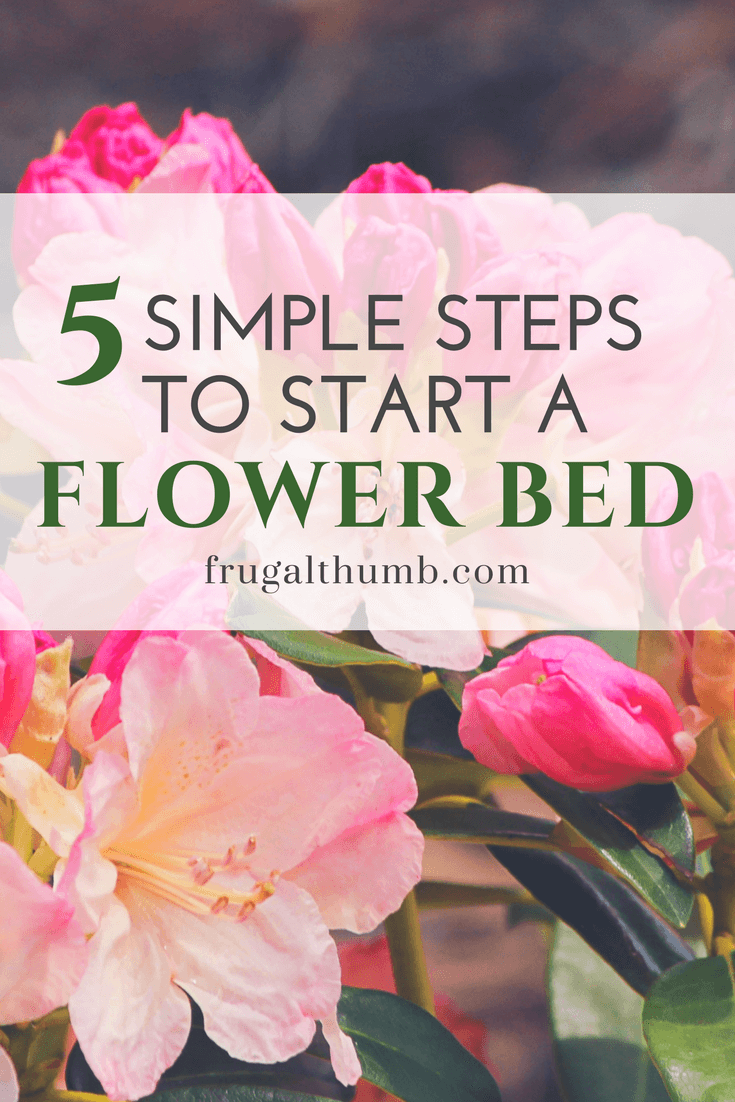
This is my go-to flower bed plan that has kept me sane in past years. So scope out a spot in your yard and get started with these 5 simple steps!
Important: Once you’ve scoped out the area where you want your flower bed, call 811 a few days before digging. Local utilities will mark their buried lines on your dig site, so you can be sure to stay safe. http://call811.com/before-you-dig
My sister wanted to redo her flower bed so I gave her these tried-and-true instructions, and I’ve included her awesome results below.
Before:
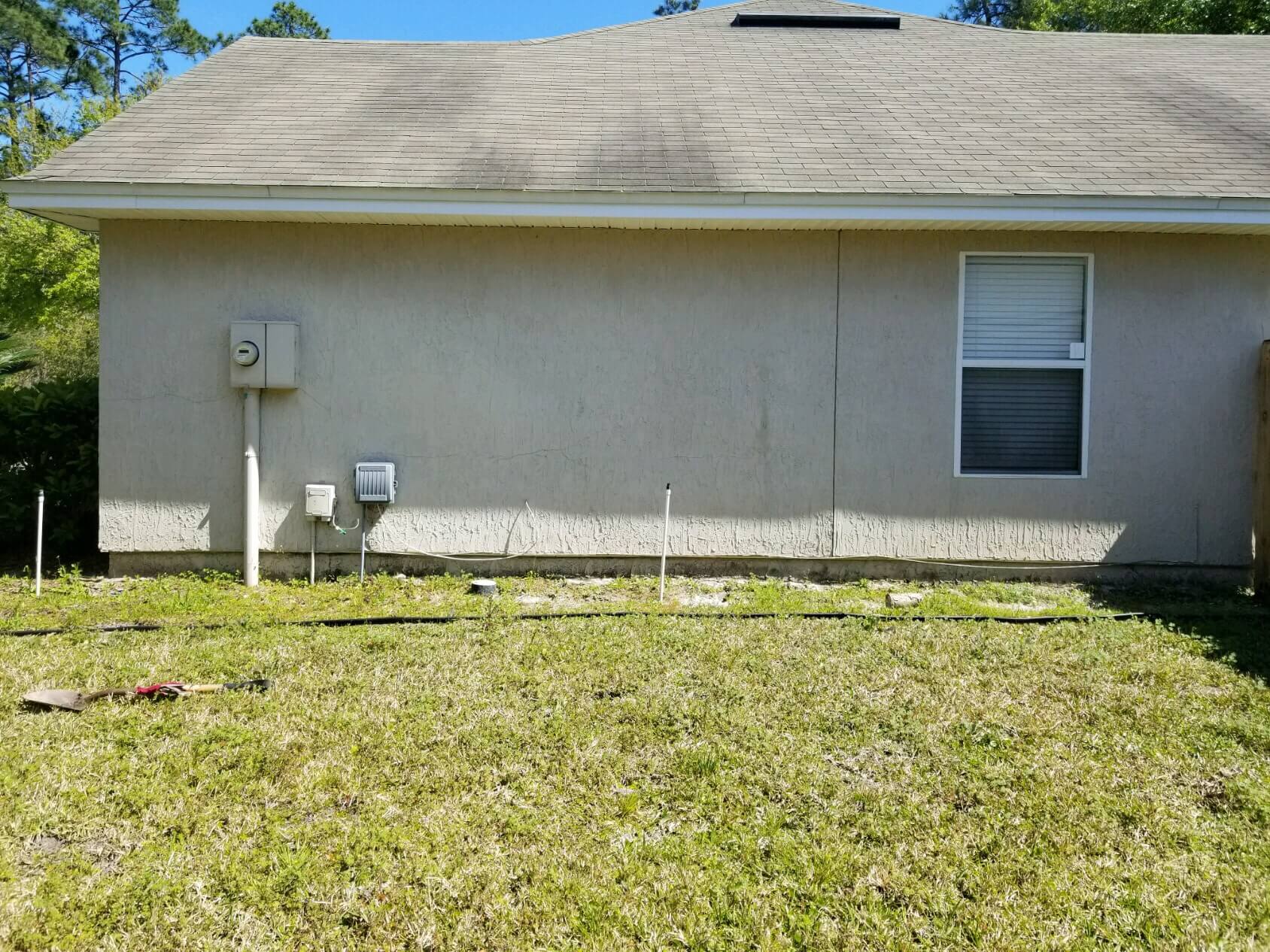
First, round up the following tools that you’ll need:
Tools
- Shovel
- Newspaper
- Weed barrier – You can buy weed barrier like this:
OR: You can use more newspaper, flattened cardboard boxes from home deliveries, or paper bags from the grocery store. All free options! - Scissors – for cutting your weed barrier
- Mulch – If you’re feeling ambitious, I share how to make your own here: Make your own quality flower garden mulch
You can also save on mulch by using shredded paper with a smaller layer of mulch on top. - Plants
- Optional: stakes, something heavy for holding things down if it’s windy
Once you have your tools, follow these steps.
5 steps to create a weed-resistant garden bed from scratch
1. Use your shovel to dig and flip over hunks of ground throughout the area where your flower bed will be.
This step clears the ground of whatever is currently growing, saves all the dirt, and breaks up the soil to make it easier for planting. It also has the added bonus of the old plants and weeds fertilizing the ground as they decay over the next few weeks.
If the ground is hard, water it first and let the earth soak it up for an hour before attempting to dig. Or wait until after a few rainy days. This will save you a lot of sweat and soreness.

2. Cover the entire area with newspaper or paper bags.
It’s important to do this because it helps block the light from getting to any of the weeds that might try to live through the turning of the dirt.
Note: If it’s windy, you can do this step and the next step simultaneously and use a couple heavy items to prevent things from blowing away.
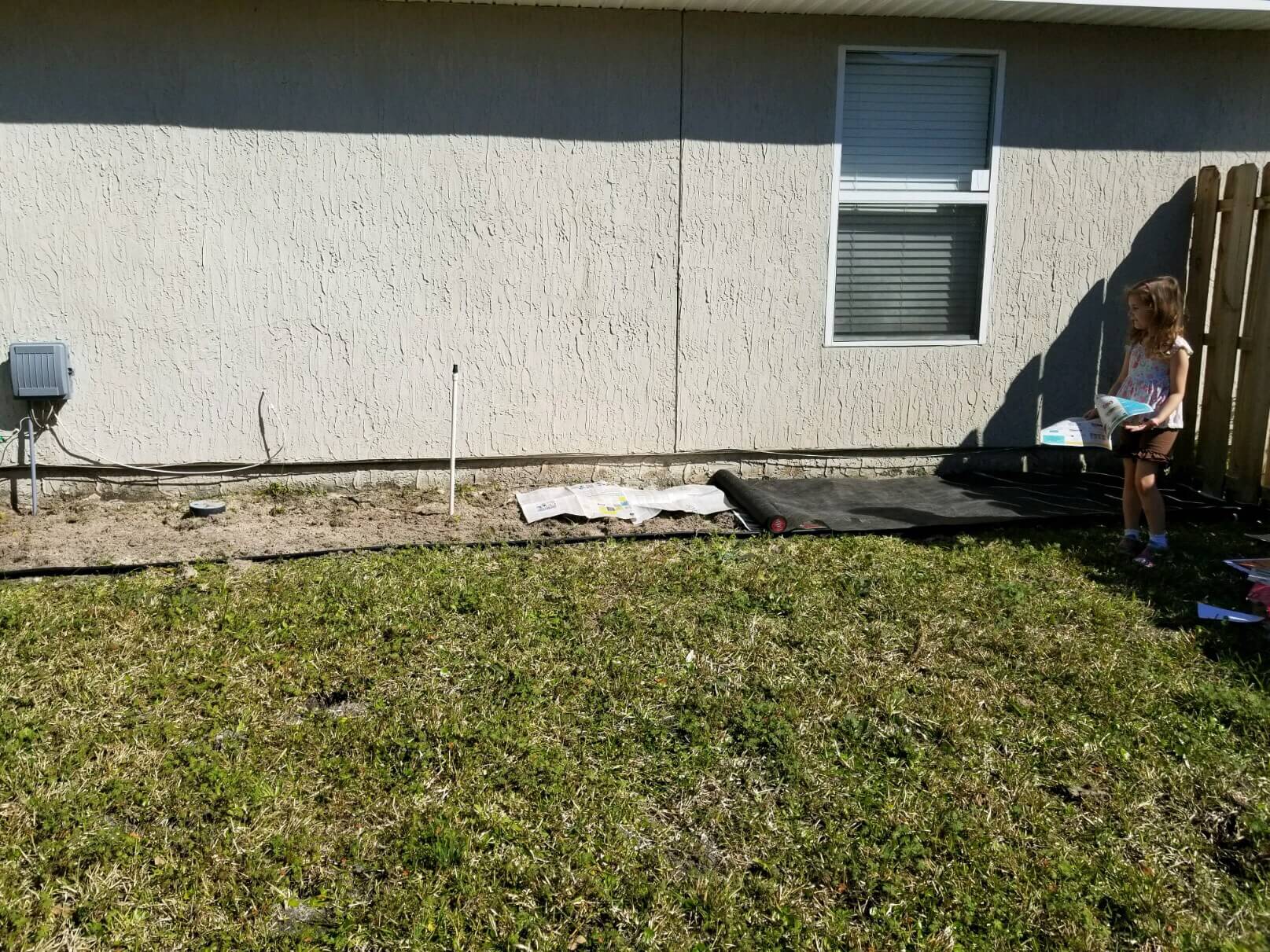
3. Roll out the weed barrier and cover all the newspaper.
The weed barrier is going to allow your flower bed to breathe and let water through to the plants while blocking sunlight and preventing any weeds from growing.
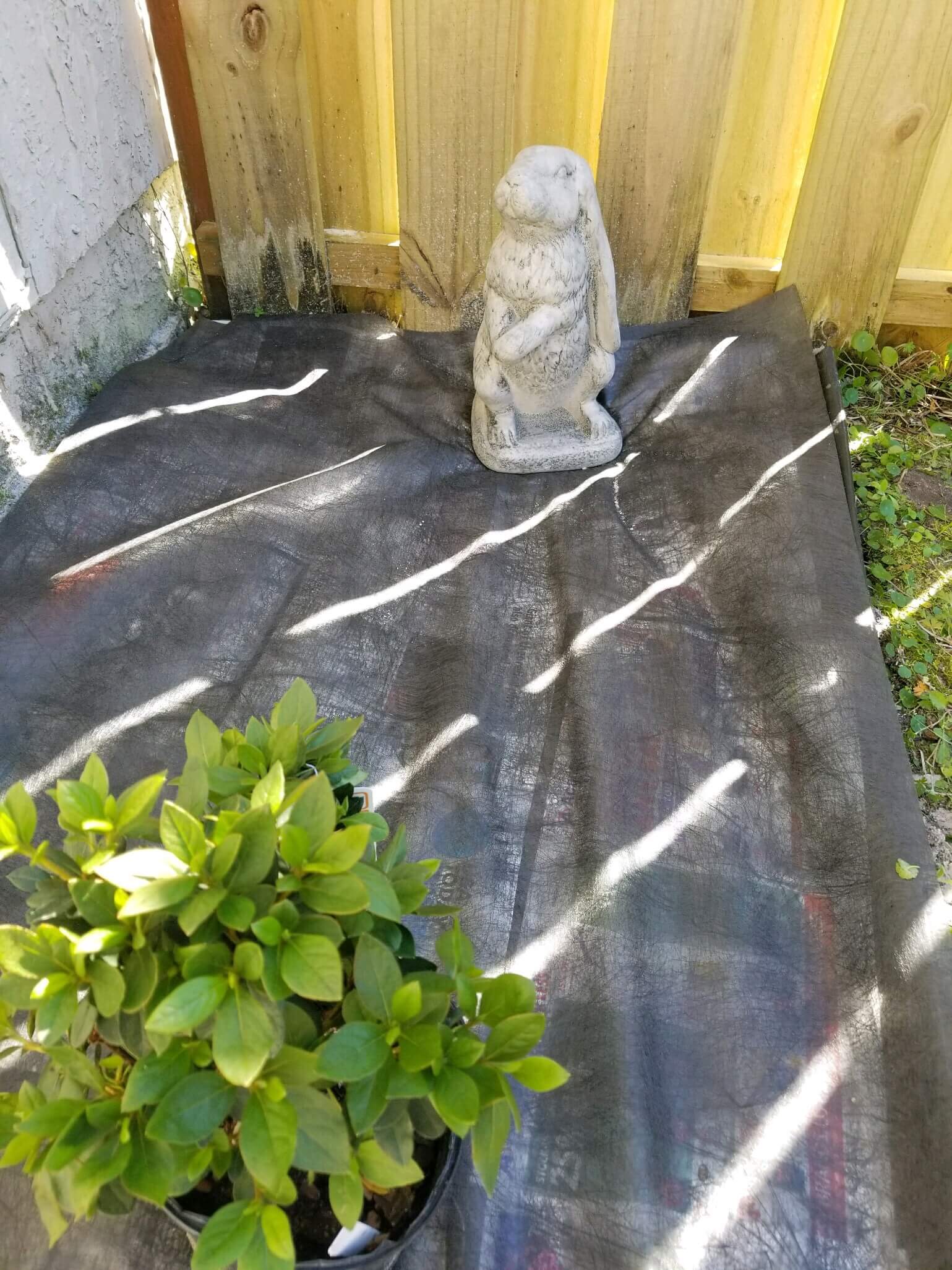
If you don’t want to shell out for fancy weed barrier, a single layer of flattened cardboard boxes will do nicely as well. Be sure to overlap the boxes by a couple inches or that’s where the weeds will sneak through.
4. Cut an x in the weed barrier where you want your plants. Then plant and water them.
Be sure to set the plants out and take a step back to look it over so you are sure you space them well and like how it looks before you cut the weed barrier.
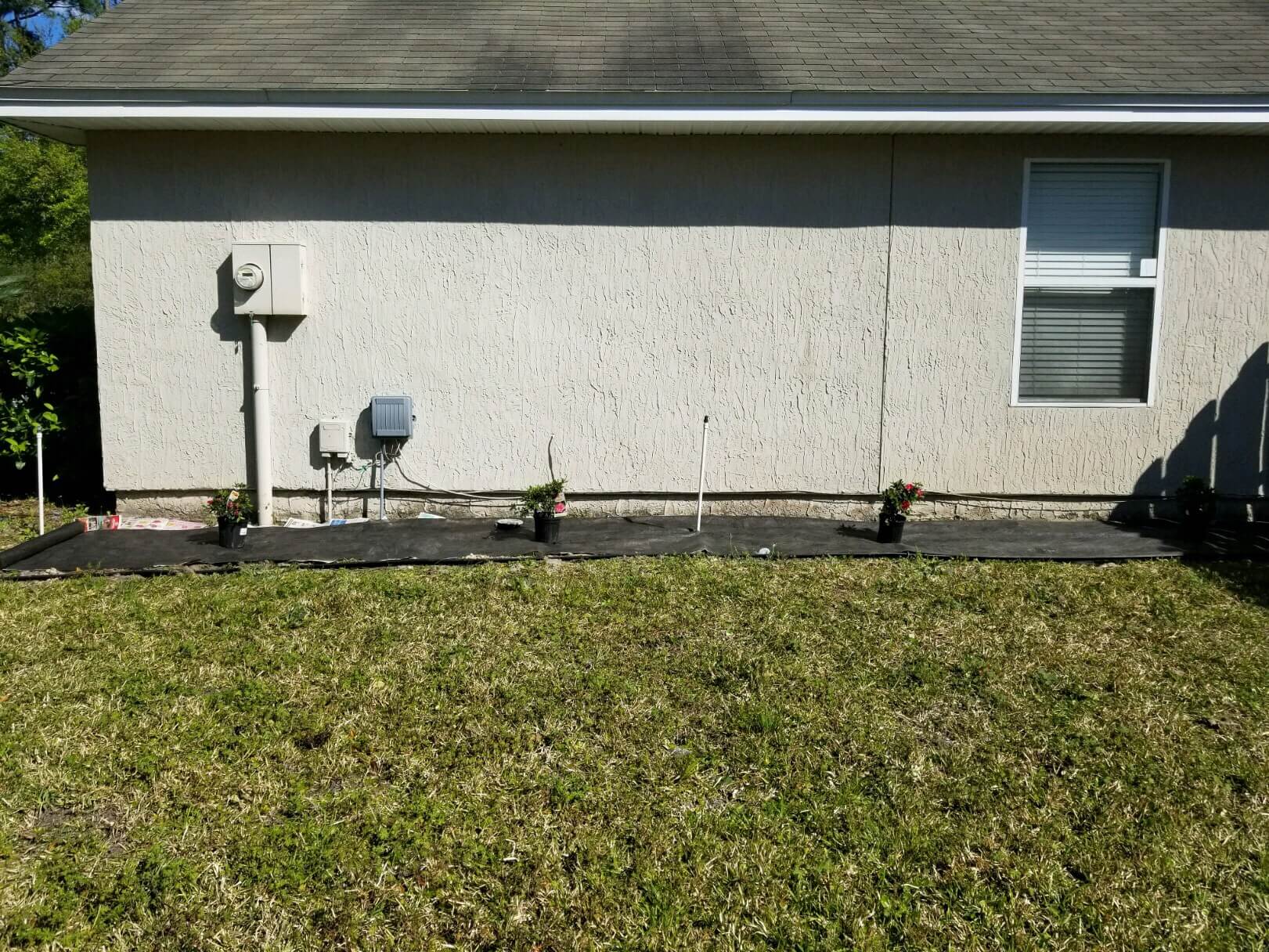
5. Mulch the whole area.
Once your plants are in the ground, mulch away! I find that 1-3 inches deep is plenty.

And voila! You’ve just made a weed-resistant flower bed that looks great in a single afternoon – without chemicals!
My sis said she got this done in a couple hours with some sweat and only one blister! Yesss! Winning!
After:

It looks sooo good!
You are going to love how much this technique cuts down on how much weeding you have to do throughout the season.
Give it a try this spring!


One comment